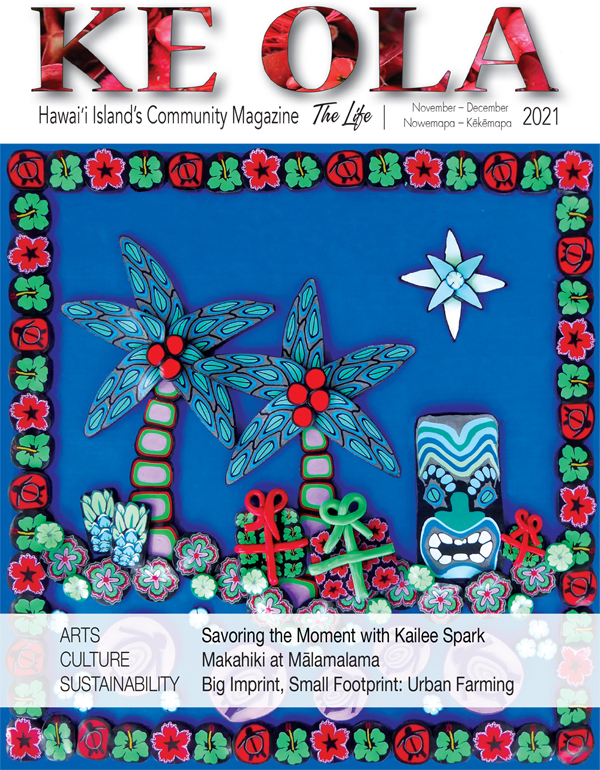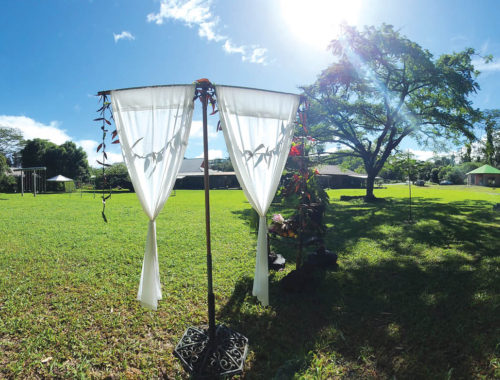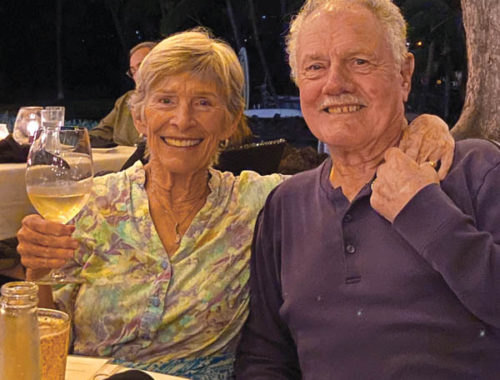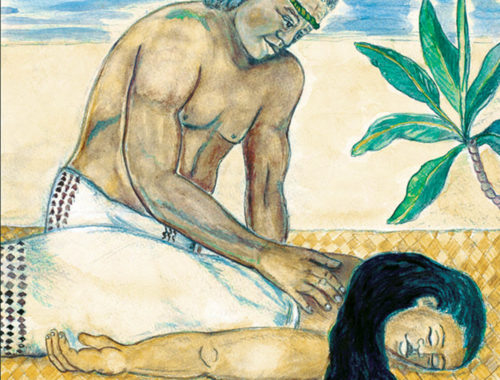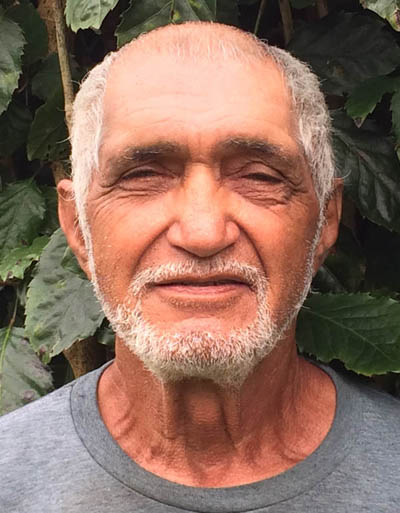
Meet Bernie Waltjen
By Carole J. Gariepy

It’s a special treat when a snowbird from Massachusetts has an opportunity to hear the life story from a native Hawaiian who has many skills, diverse experiences, and a rich Hawaiian history.
When I stopped in front of a neighboring house that had an assortment of fruit out front with a FREE sign, I deliberated whether they were meant for residents or if I, a visitor, would be welcome to take something. Then a voice called out, “Help yourself!” That’s how I met Bernie. I’ve chatted with him several times since, and realize he has a story that needs to be told.
Bernie was born in 1941 in Hawai‘i National Park, the park’s name when Hawai‘i was a US territory. After it became a state, the park became one of America’s national parks and was renamed Hawai‘i Volcanoes National Park. The park is Bernie’s heritage. His native Hawaiian mother, Harriet Hauanio, was also born in the park where her father, John, was a caretaker. Employees lived in small cottages near the entrance where the park offices are now. Bernie’s father, Bernard Waltjen, came to Hilo from Germany at the start of World War II. His family had sent him there temporarily to be safe, but Bernard remained on the island afterward. He married Harriet and obtained a maintenance job at the park, and also a place to live.
Bernie remembers riding through the park every evening with his father (who was the park warden by then) to check that everything was secure and safe during the war years. The bombing at Pearl Harbor was imprinted in people’s minds. He said the headlights were covered so they wouldn’t be seen, only a two-inch opening was allowed to dimly light the roads. He sat close to the windshield to help his father keep watch.
Tourism to the park was high after the war. The only airport on the island at that time was in Hilo. Visitors to Kona were transported from Hilo by limousine, a long slow ride over a narrow winding road. A stop along the way to have a meal at Volcano House and to see the volcano erupting offered a delightful and much-needed break. Bernie said the crater was much smaller then, and it was active. “Watching it was like going to a big drive-in movie,” he recalls.
In 1951, the cottages were turned over to park rangers, meaning the maintenance workers had to leave. Bernie and his family moved to the Hilo area where he experienced another dramatic piece of Hawaiian history, the 1960 tsunami.
There had been seismic indications and warnings about a possible tsunami for a month, then reports came from Chile about an earthquake causing serious damage. Hawai‘i was warned that it was expected to arrive around midnight. Later, further reporting came in that no significant waves had hit other islands along the path to Hawai‘i Island, so most people didn’t take the previous warnings seriously. Bernie and his friends were part of that group. He laughs as he remembers, “We had more guts than brains.”
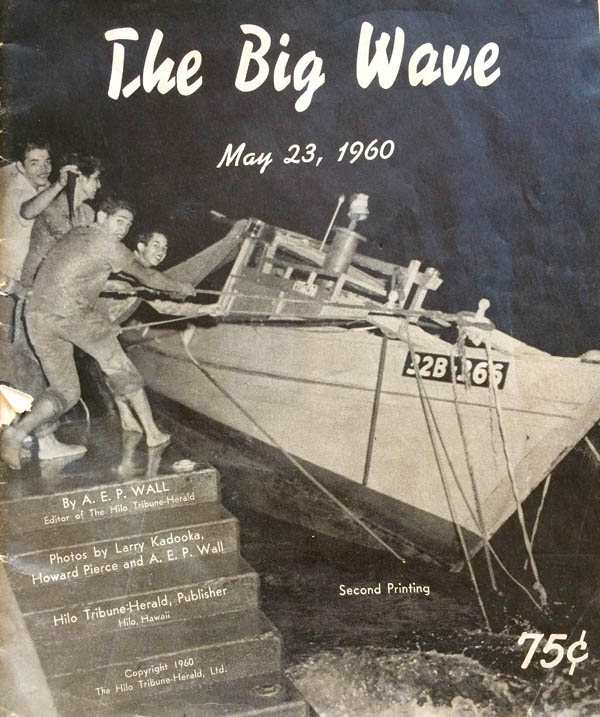
Bernie and his friends parked his car across the street from the Wailoa River around midnight and they went down to the waterfront to see if anything was happening. First, they saw fish scattered on the beach—huge fish—and the water had receded. That was very unusual, it wasn’t a good sign. Then a policeman beckoned them to come help tie a boat to a dock by the Wailoa Bridge as the strong suction of the retreating waves was pulling boats out to sea. Together they tugged it in and tied it well.
The real danger of the situation came when they saw a gigantic wave in the distance. Bernie said, “The foaming wave was higher than a telephone pole. We ran faster than we could ever imagine we could run. We flew. I didn’t turn around. It sounded like 10 bulldozers were knocking down the buildings behind me. Then an explosion and sparks filled the sky. The power plant had been hit; everything went black. We barely made it. People behind me died and some were my good friends. The Omega brothers who lived in the Japanese village didn’t make it. Sixty-one people perished that evening. I still hear the sound today when a big wave comes in when I’m at the beach. My memory bank tells me to leave.”
Bernie went back the next day to look for his car. He found it crushed into pieces beneath an apartment building. The securely tied boat was found destroyed along with cars and other debris in a pile by the Civic Center. Bernie’s story and that of other survivors is preserved in the Pacific Tsunami Museum in Hilo.
After graduating from Hilo High School, Bernie had several jobs. Like his father and grandfather, he could do most everything—he was a jack of all trades. He worked on construction for the Hilo Company, did maintenance at the Volcano House, operated heavy equipment for the Hawaiian Sugar Company, grafted macadamia nut seedlings for C. Brewer & Company—and then love beckoned him.


His Hawaiian sweetheart, Grace Ortega, went to college in Los Angeles. Bernie followed Grace, they got married, and lived in Los Angeles from 1970 to 2000. While in Los Angeles, he worked for Weber Aircraft and built the bathroom units for the Boeing 747, and later for the 757, 756, and 777.
During that period, Bernie had an opportunity to develop his artistic skills. The structural foam he worked with was as hard as wood. He started experimenting with sculpting the discarded pieces and became skilled in carving interesting figures and designs with the unique material. The many ribbons he won in art competitions in Los Angeles show how greatly his skill was recognized. His Hawaiian heritage is evident in many of the designs, such as the tiki figures, and a tiki chess set. These figures will eventually be gifted to a cultural center.
Like many whose native land beckons them as they grow older, he and his wife returned to Hawai‘i and settled in Nā‘ālehu in 2000.
The stop at Bernie’s fruit stand sure opened my eyes to an interesting life and part of Hawaiian history. Thank you, Bernie. ❖
All photos courtesy of Carole J. Gariepy
